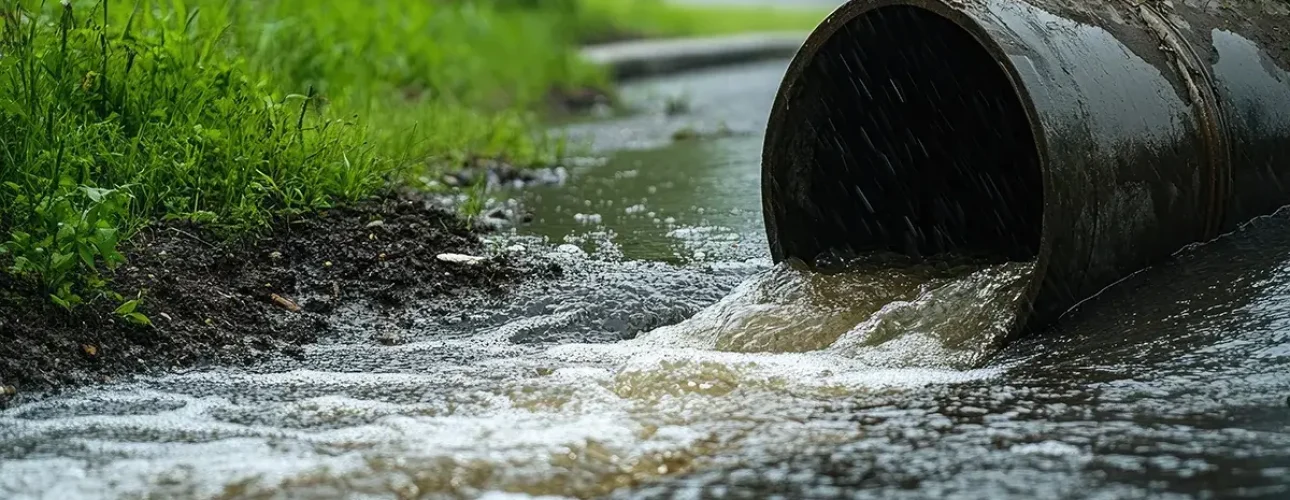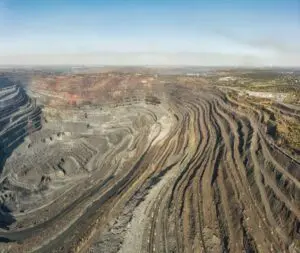The rhythmic hum of machinery, the flurry of activity, the transformation of raw land into vital infrastructure – construction sites are dynamic hubs of progress. Yet, this essential development can inadvertently pose a significant threat to one of our most precious resources: water. Stormwater runoff from construction sites, if not properly managed, can become a conduit for sediment, chemicals, debris, and other pollutants to enter our rivers, lakes, and groundwater, jeopardizing aquatic ecosystems and human health.
At Anderson Engineering, we understand the delicate balance between development and environmental stewardship. We believe that responsible construction practices are paramount, and proactive measures to prevent stormwater pollution are not just regulatory requirements, but a fundamental obligation. This post delves into practical and effective strategies that construction professionals can implement to keep our waters clean.
Understanding the Threat: Why Stormwater Management Matters
Before diving into solutions, it’s crucial to grasp the gravity of the problem. Unlike wastewater from homes and businesses, which is treated before discharge, stormwater runoff often flows directly into nearby water bodies without any filtration. On construction sites, this runoff can pick up a cocktail of pollutants, including:
- Sediment: Eroded soil from exposed areas is the most common pollutant. Excessive sediment clouds water, reducing sunlight penetration essential for aquatic plants, smothering fish spawning beds, and clogging waterways.
- Chemicals: Fuel, oil, paint, solvents, concrete washout, and other chemicals used on-site can leach into stormwater and contaminate water sources, posing risks to both aquatic life and human health.
- Debris: Construction waste like plastic, wood scraps, and packaging can be carried by stormwater, polluting waterways, harming wildlife through ingestion or entanglement, and obstructing drainage systems.
- Nutrients: Fertilizers used for landscaping or soil stabilization can contribute excess nitrogen and phosphorus to water bodies, leading to harmful algal blooms that deplete oxygen and harm aquatic life.
- Pathogens: In some cases, improperly managed sanitary facilities can introduce bacteria and viruses into stormwater runoff, posing health risks.
The cumulative impact of these pollutants can be devastating, affecting drinking water sources, recreational activities, and the delicate balance of our ecosystems. Therefore, implementing robust stormwater pollution prevention measures is not just about compliance; it’s about protecting our shared future.
Practical Strategies for a Cleaner Construction Site
The cornerstone of effective stormwater management lies in a proactive and multi-layered approach. Here are some practical strategies that construction teams can implement at every stage of a project:
1. Planning and Design: Setting the Stage for Success
- Develop a Comprehensive Stormwater Pollution Prevention Plan (SWPPP): This living document should outline all the erosion and sediment control measures, best management practices (BMPs), and procedures that will be implemented on-site. It should be tailored to the specific characteristics of the site, including topography, soil type, and proximity to water bodies. Resources like the EPA’s Developing Your Stormwater Pollution Prevention Plan: A Guide for Construction Sites can provide valuable guidance.
- Minimize Site Disturbance: Limit the area of land exposed at any given time. Phased development, where only necessary areas are cleared and graded, can significantly reduce erosion potential.
- Preserve Natural Vegetation: Existing vegetation acts as a natural buffer, intercepting rainfall, reducing runoff velocity, and filtering pollutants. Incorporate natural features like trees and wetlands into the site design whenever possible.
- Strategic Site Layout: Plan the location of stockpiles, material storage areas, and vehicle maintenance areas away from drainage paths and water bodies. Implement secondary containment measures for liquid materials to prevent spills from reaching stormwater.
- Design Effective Drainage Systems: Plan for controlled drainage using swales, diversions, and sediment traps to direct stormwater flow and capture pollutants before they leave the site.
2. Erosion and Sediment Control: Keeping Soil in Place
- Stabilize Exposed Soils: Promptly stabilize disturbed areas with temporary or permanent vegetation, mulch, erosion control blankets, or other appropriate measures. The type of stabilization should be chosen based on the slope, soil type, and expected duration of exposure.
- Implement Perimeter Controls: Install sediment barriers such as silt fences, fiber rolls, or sediment logs along the perimeter of the site and around stockpiles to trap sediment-laden runoff. Regularly inspect and maintain these barriers, ensuring they are properly installed and free of breaches.
- Utilize Sediment Traps and Basins: Construct temporary sediment traps or basins to capture and settle out sediment from runoff before it leaves the site. These structures require periodic cleaning to maintain their effectiveness.
- Control Runoff Velocity: Implement measures like check dams, slope breaks, and vegetated swales to slow down the flow of stormwater, allowing sediment to settle out and reducing erosive forces.
- Protect Storm Drain Inlets: Install inlet protection devices such as fabric drop inlet filters or gravel bags around storm drain inlets to prevent sediment and debris from entering the storm sewer system.
3. Pollution Prevention: Managing Materials and Waste Responsibly
- Proper Material Storage: Store all materials, including fuels, oils, paints, and solvents, in designated areas with secondary containment to prevent leaks and spills. Keep containers tightly sealed and clearly labeled.
- Spill Prevention and Control: Develop and implement a spill prevention and control plan. Train employees on proper handling procedures and spill response measures. Keep spill cleanup materials readily available and ensure prompt cleanup of any spills.
- Concrete Washout Management: Designate specific washout areas for concrete trucks and equipment. These areas should be lined and contained to prevent concrete slurry and wastewater from entering the ground or stormwater. Allow concrete washout to dry and dispose of it as solid waste.
- Solid Waste Management: Implement a comprehensive waste management plan that includes regular collection and proper disposal of construction debris. Secure dumpsters to prevent windblown litter and ensure they are covered during rain events.
- Vehicle and Equipment Maintenance: Conduct regular maintenance of vehicles and equipment to prevent leaks of oil, fuel, and other fluids. Perform maintenance in designated areas away from drainage paths and use drip pans to capture any leaks.
- Dust Control: Implement dust control measures such as watering exposed surfaces, using dust suppressants, or covering stockpiles to prevent wind erosion and the transport of sediment off-site.
4. Site Management and Monitoring: Continuous Improvement
- Regular Inspections: Conduct frequent inspections of all erosion and sediment control measures and pollution prevention practices, especially before and after rain events. Identify and promptly address any deficiencies or areas needing repair.
- Employee Training: Educate all site personnel on the importance of stormwater pollution prevention and their individual responsibilities in implementing the SWPPP. Regular training ensures everyone understands BMPs and procedures.
- Record Keeping: Maintain thorough records of inspections, maintenance activities, spills, and any corrective actions taken. This documentation is essential for demonstrating compliance and identifying areas for improvement.
- Adaptive Management: Regularly review the effectiveness of the implemented BMPs and make adjustments as needed based on site conditions and monitoring results. Stormwater management is an ongoing process that requires flexibility and adaptation.
A Commitment to Clean Water: Our Shared Responsibility
Protecting our water resources is a collective effort. By embracing these practical strategies and fostering a culture of environmental responsibility on construction sites, we can minimize our impact and ensure cleaner waters for future generations. At Anderson Engineering, we are committed to providing our clients with the expertise and solutions necessary to achieve effective stormwater management and sustainable development.
Ready to build responsibly and protect our waterways?Contact Anderson Engineering today for expert consultation and support in developing and implementing robust stormwater pollution prevention plans for your construction projects. Let’s work together to keep our waters clean.



